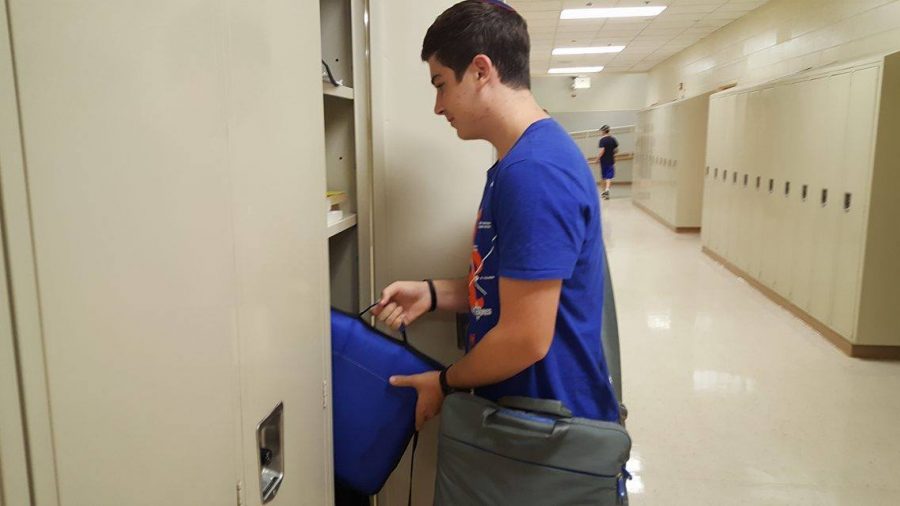Organizing the odds and evens
Community adapts to new schedule
Sophomore Max Rogal reaches for his binder, which contains materials for all nine of his classes.
September 13, 2016
Organization is a key to success in school, and with the new high school schedule, it can be a challenge for students to figure out how to arrange materials for different classes.
The schedule this year differs from last year’s block schedule in that students have some classes every day from Monday through Thursday while other classes only meet three days a week. In the past, classes that occurred on the same days were grouped in sets of three classes.
Educational Support Service Specialist Abbe Luther suggests that students have one binder for their morning class, one for periods two, four and six, one for periods three, five and seven and one for the afternoon classes.
“You should carry with you [supplies] for two periods at a time and then you can go back to your locker for the next [class],” Luther said.
One complication of this system is that the classes are in numerical order from period two to seven on Fridays, which is a different order than they are in on most days.
“On Fridays, students don’t have to carry their period one binder, but will have to carry more binders than usual,” Luther said.
Sophomore Max Rogal, however, has a different approach to keeping his classwork organized. He keeps all his work for his nine classes in one binder, a system he has been using since seventh grade.
Additionally, Rogal thinks that only using one binder, instead of multiple binders, has made the transition to the new schedule smoother.
“I think it’s easier because there’s no clear way to organize your binders, like, do you want to organize it with two, four, six and then one, eight, nine, and three, five, seven?” Rogal said. “It’s easier to have one binder.”
Freshman Gigi Becker utilizes a system that involves multiple binders, but hers are set up different than how Luther suggests. Becker keeps a separate binder for each day of the week that has a distinct schedule, even though this means that she has more than one binder for classes that meet on multiple days.
“It just helps me stay more organized,” Becker said.
She also uses a planner to write down assignments and a folder for paper handouts and homework that is due the next day. Becker advises other students to do what works for them in order to stay as organized as possible.
Students are not the only ones who have to adjust to the new schedule while keeping their classwork organized. Science teacher Raymond Hodges has one Physics I class period five, which meets every Tuesday, Thursday and Friday, while his other Physics I class meets Monday through Thursday.
Hodges tries to keep these two classes learning the same material at the same pace and says that he is still adjusting to having the classes meet for different amounts of time.
“I’m still figuring the [scheduling] out and we’ll slowly get a nice pattern and rhythm,” Hodges said. “I’m getting used to what we can do in 50 minutes and what we can do in 70 minutes and how to break up different activities and different things that we do in the classroom to fit into those two different schedules.”
Similar to Becker’s homework agenda, Hodges also keeps a planner to write down lesson plans.
“I don’t think I would survive without [my agenda],” Hodges said.
Hodges says that it’s a challenge in the beginning of the semester for students to figure out what works best for them since each individual has a different method of organizing things.
“But the bottom line is it takes some planning and thinking ahead,” Hodges said. “Which class are you going to see? How many times that week? Should I do this class’ homework today or do that class’ homework tomorrow?”
Although it may be difficult for students to figure out what works best, it is important that they stick to the system that they choose.
“Ultimately, everyone must commit to a system and then follow it,” Luther said.








